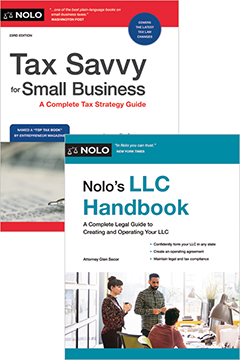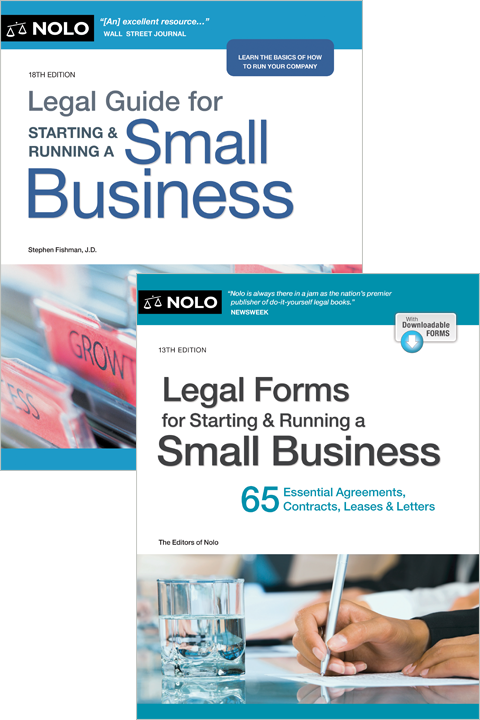Has your limited partnership reached its limit? If you’re ready to dissolve your business, you need to file dissolution papers, settle your debts, and distribute assets to the partners.
Like with any business venture, general and limited partners might be tasked with closing their business. Perhaps the partners want to pursue other business opportunities or have decided that the economic climate doesn't support continuing the limited partnership (LP). General partners could die or decide to retire with no one willing or able to take over. Whatever the reason, there are certain issues that need to be navigated before terminating the partnership.
While dissolving your LP might seem like a daunting task, it's a necessary one. Legally ending your partnership will also legally end your obligations and liabilities to it.
State law and your partnership agreement will determine the process for dissolving your LP. The procedure to dissolve your LP is very similar to the steps to dissolve a partnership. For more detailed steps, read how to dissolve your partnership to end your liability.
Though your state's LP laws or your partnership agreement might require a slightly different procedure, you can generally follow the eight steps below to dissolve your LP.
- 1. Examine Your Limited Partnership Agreement
- 2. Vote to Dissolve Your Limited Partnership
- 3. File Dissolution Papers
- 4. Publish Notice of Your Dissolution
- 5. Review Your Third-Party Contracts
- 6. Liquidate Your Assets and Settle Your Debts
- 7. Distribute Remaining Assets to Partners
- 8. Cancel Business Accounts, Licenses, and Permits
- Consulting a Business Attorney
1. Examine Your Limited Partnership Agreement
Before you start any formal dissolution process, you need to determine whether your LP should or must dissolve. If your LP agreement—also called a "partnership agreement"—spells out the bases and procedures for initiating the dissolution process, you should follow these rules.
If you don't have an agreement or your agreement doesn't have dissolution provisions, then you should follow your state's laws. If you want to handle the dissolution differently from the default rules provided by your state's LP laws (and you don't have a partnership agreement) then you and your partners should draft a partnership dissolution agreement.
Sometimes, a specific event relating to a partner will require a general partnership to end. With LPs, usually, only events related to general partners—not limited partners—will require the LP to end. For instance, a partnership agreement might require the LP to end if a general partner dies, but not if a limited partner dies.
Typical events that might end an LP include:
- a general partner voluntarily withdraws from the partnership either to pursue other interests or to retire
- a general partner dies or becomes incapacitated
- a partner or the partnership files for bankruptcy, and
- a general partner is forced out (expelled) by the other partners.
Your partnership agreement or dissolution agreement should also spell out:
- the obligations of the general partners in winding up the business, and
- how much each partner should be compensated for their interest in the LP.
2. Vote to Dissolve Your Limited Partnership
Unless an event triggers your LP's dissolution, you'll likely need the partners to agree to dissolve the business. Your partnership agreement should specify:
- how many partners are needed to vote in favor of the dissolution, and
- whether there's a difference in voting power or requirements between general and limited partners.
Your agreement should also provide instructions for how the vote should be carried out—for example, whether the vote needs to be in person. Regardless of whether a specific event triggers the dissolution or the partners vote to dissolve, you should record the partners' decision and keep it with company records.
3. File Dissolution Papers
You can usually file the dissolution papers online with your state's secretary of state's office or corporations division. The form for dissolving an LP is sometimes called a "certificate of cancellation" or "statement of dissolution." Some states require you to file two forms. Check your secretary of state's website for instructions on which forms to file.
You might need to receive tax clearance before you can dissolve your LP. Some states require you to receive tax clearance from your state's tax authority. To receive tax clearance, you'll need to pay any outstanding state taxes for your LP. Once you pay your business taxes, you can obtain a tax clearance letter or form—sometimes called a "certificate of account status" or "tax clearance certificate"—from your state agency that handles taxes (usually the department of revenue).
You might be required to wind up your business before you can dissolve your LP. You should check your state's LP dissolution requirements for guidance. If you need to wind up your LP first, you'll submit your dissolution forms at the end of the winding-up process.
Once your LP is dissolved, you can prevent your partners from binding the LP to new obligations and liabilities after dissolution. For example, suppose you file to dissolve your LP on April 1st. On April 10th, your former partner signs a contract under your LP's name with another company, Topanga Technologies. You probably won't have to honor the contract your former partner signed because Topanga Technologies had notice of your partnership's dissolution when you filed your dissolution statement with your state.
If you're a general partner and personally liable for the business's debts, officially cutting ties with your LP and partners is critical. You don't want to be forced to pay a debt that your former partner signed up for when you were no longer in business with them.
4. Publish Notice of Your Dissolution
As with dissolving a general partnership, you should publish a formal notice of your LP's dissolution in a local newspaper. By properly notifying the public of the dissolution, any creditors or other third parties are given a limited time period to step forward with any valid claims against the partnership. This notice and publication process can help avoid unexpected future lawsuits and other liability risks at a later date.
5. Review Your Third-Party Contracts
While your LP was operating, your business might've entered into agreements with a wide range of third parties, including:
- creditors
- customers
- vendors
- suppliers
- lessors
- employees, and
- independent contractors.
You should notify applicable third parties about the partnership's dissolution if you haven't already. Look over these contracts for any notice and termination requirements as well as any remaining obligations you might owe. For instance, you might be required to give 30 days written notice to terminate a contract.
Reviewing these contracts might help guide the general partners in closing down the business. They can set aside adequate resources to comply with outstanding debt or contractual obligations.
For example, suppose your LP is contracted to order 100 yards of fabric every two weeks. Your contract's termination provision requires you to give seven days' notice to cancel the contract. You're LP dissolves but you're contracted to purchase 100 more yards of fabric in two days—five days short of your minimum notice requirement. Unless you can get your supplier to waive the notice requirement, you'll need to make one more fabric purchase and cancel the contract. So, you'll need to make sure you set aside funds to make the final purchase as you're winding up your LP.
6. Liquidate Your Assets and Settle Your Debts
Once you've notified your creditors of your LP's dissolution and reviewed your contracts, you should settle your business debts. If you have any assets you can liquidate—such as equipment or inventory—sell them. You can use that money to pay your creditors and distribute the rest of the funds to the partners.
7. Distribute Remaining Assets to Partners
If you have any money left over after settling your partnership's debts, you can distribute the remaining funds to the partners. You should distribute the business's assets based on each partner's capital account. This account represents how much the LP owes a partner based on their distribution share.
8. Cancel Business Accounts, Licenses, and Permits
If you opened a business bank account for your LP, close it.
Take account of any registrations, licenses, and permits your LP holds. For instance, if your company sells goods, you might have a seller's permit. You might be able to transfer some business licenses or permits when you sell your assets. Cancel any remaining business licenses or permits. If you don't, you could face liabilities such as renewal fees and fines.
Consulting a Business Attorney
If you or your partners have experience liquidating and closing a business, you can probably dissolve your LP on your own. But if you have a long list of business debts and obligations, it could be a good idea to talk to a business lawyer. They can help you review your business contracts, negotiate with creditors, and file the necessary documents to end your LP's legal existence.
- 1. Examine Your Limited Partnership Agreement
- 2. Vote to Dissolve Your Limited Partnership
- 3. File Dissolution Papers
- 4. Publish Notice of Your Dissolution
- 5. Review Your Third-Party Contracts
- 6. Liquidate Your Assets and Settle Your Debts
- 7. Distribute Remaining Assets to Partners
- 8. Cancel Business Accounts, Licenses, and Permits
- Consulting a Business Attorney



